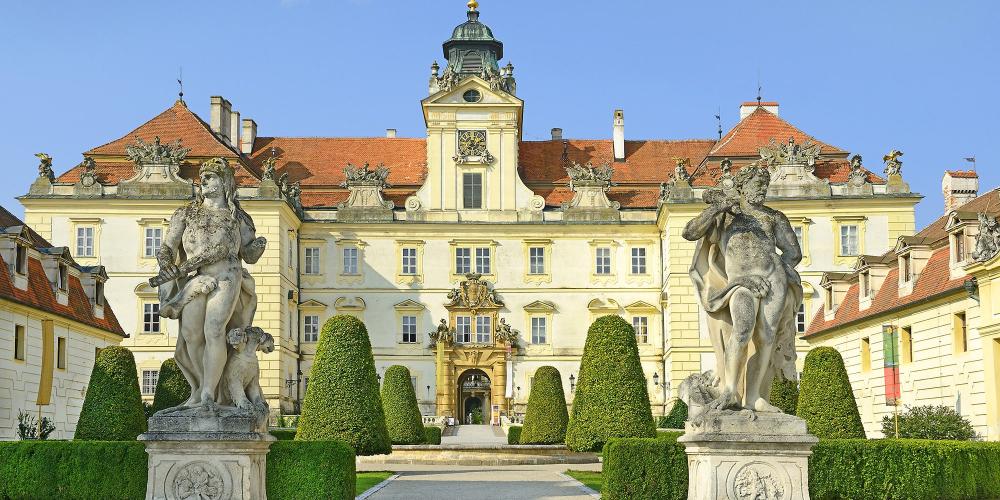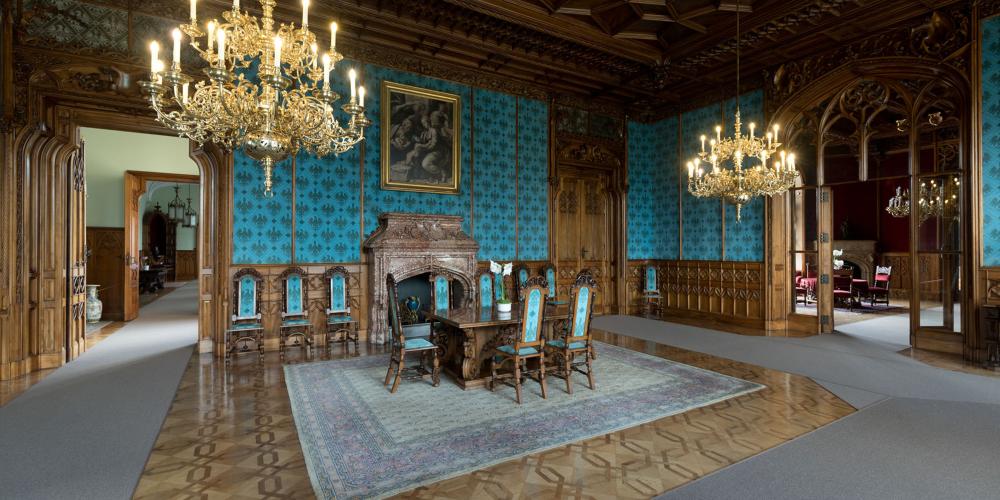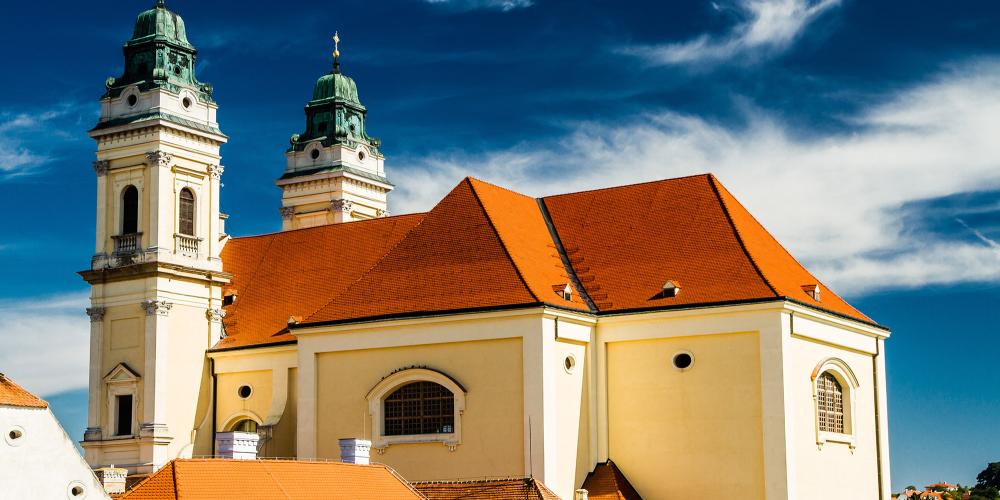Lednice-Valtice Cultural Landscape, Czechia

The area around Lednice and Valtice is an exceptional example of landscape design. The artistry evolved over several generations since the Enlightenment — all under the care of a single family . It is one of the largest artificial landscapes of Europe.
The two castles at Lednice and Valtice look out at each other like lovers across a massive garden expanse. A seven-kilometre-long avenue lined with lime trees connects the two. The castles and the stunning parks around them are the result of a labour of love from the Dukes of Liechtenstein, who spent hundreds of years creating their own piece of paradise in the countryside away from the small nation they administered.
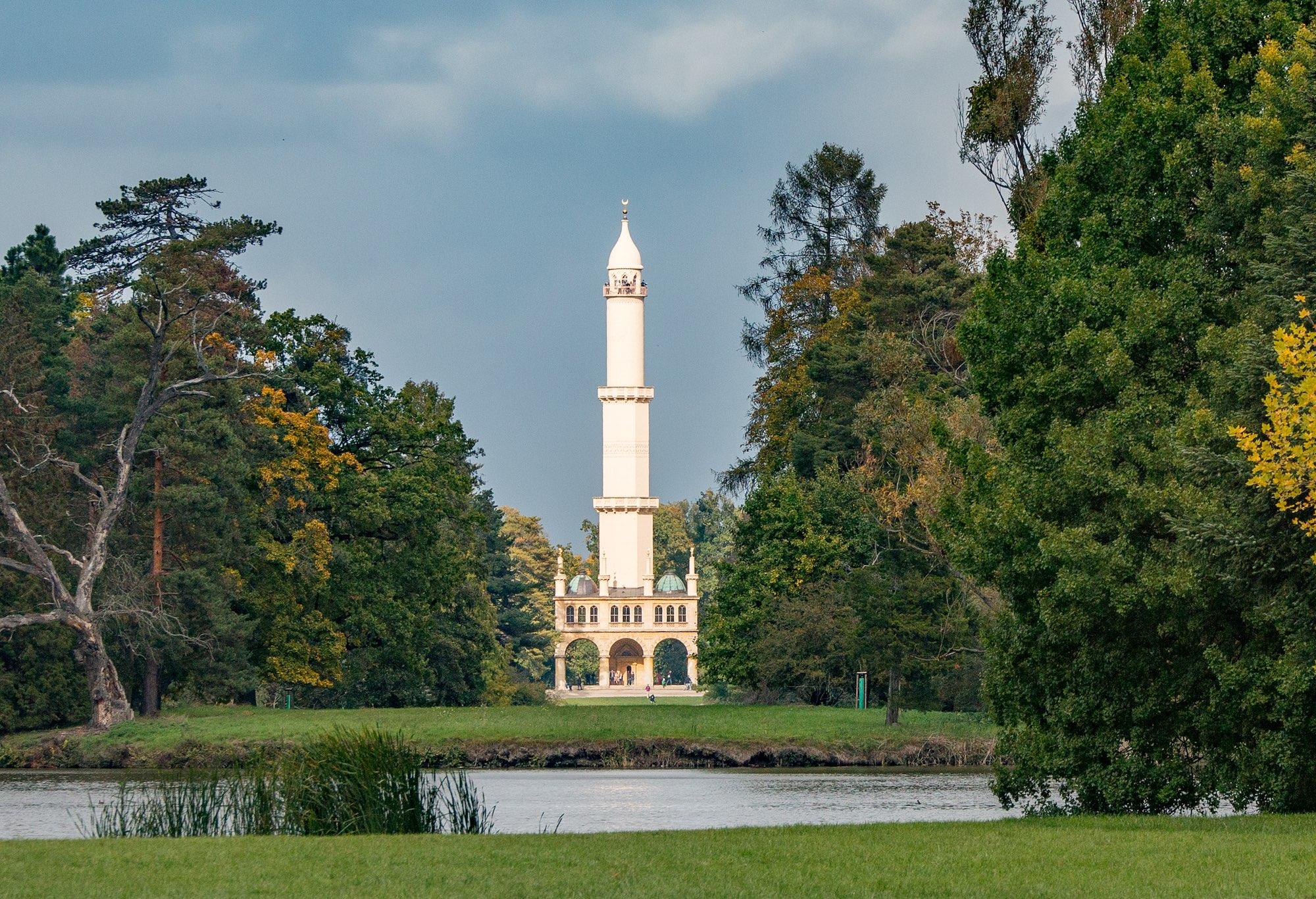
The castle at Lednice is striking for its size and design from the outside, especially when seen as the backdrop to the immaculate gardens of flowers and hedges surrounding it. Take a tour inside and see the collection of furniture and art it holds. Outside, follow the paths through the romantic gardens that lead past lakes and manicured lawns. The area is very popular with cyclists, and you will discover why as you travel enroute to Valtice, through the expansive parks that have been carefully landscaped to blend forests with fields and lakes. At Valtice, admire the impressive Baroque castle dominating the small village that has grown around it. The region is famous for its wine and local stores offer tastings and sales.
Continual Transformation through Constant Excellence
The Lednice-Valtice complex is a unique and vast cultural landscape, designed mostly in the 18th and 19th centuries during the reign of the House of Liechtenstein. The main architectural attractions are the Lednice and Valtice Castles with their extensive parks. The Lednice Castle, originally Baroque, was rebuilt to its romantic Neo-Gothic style in 1846–1858 by the architect Georg Wingelmüller. Important parts of the complex include the palm greenhouse (Georg Wingelmüller, 1843–1845) and the monumental, baroque Riding Hall (Johann Bernhard Fischer von Erlach, 1688–1699).
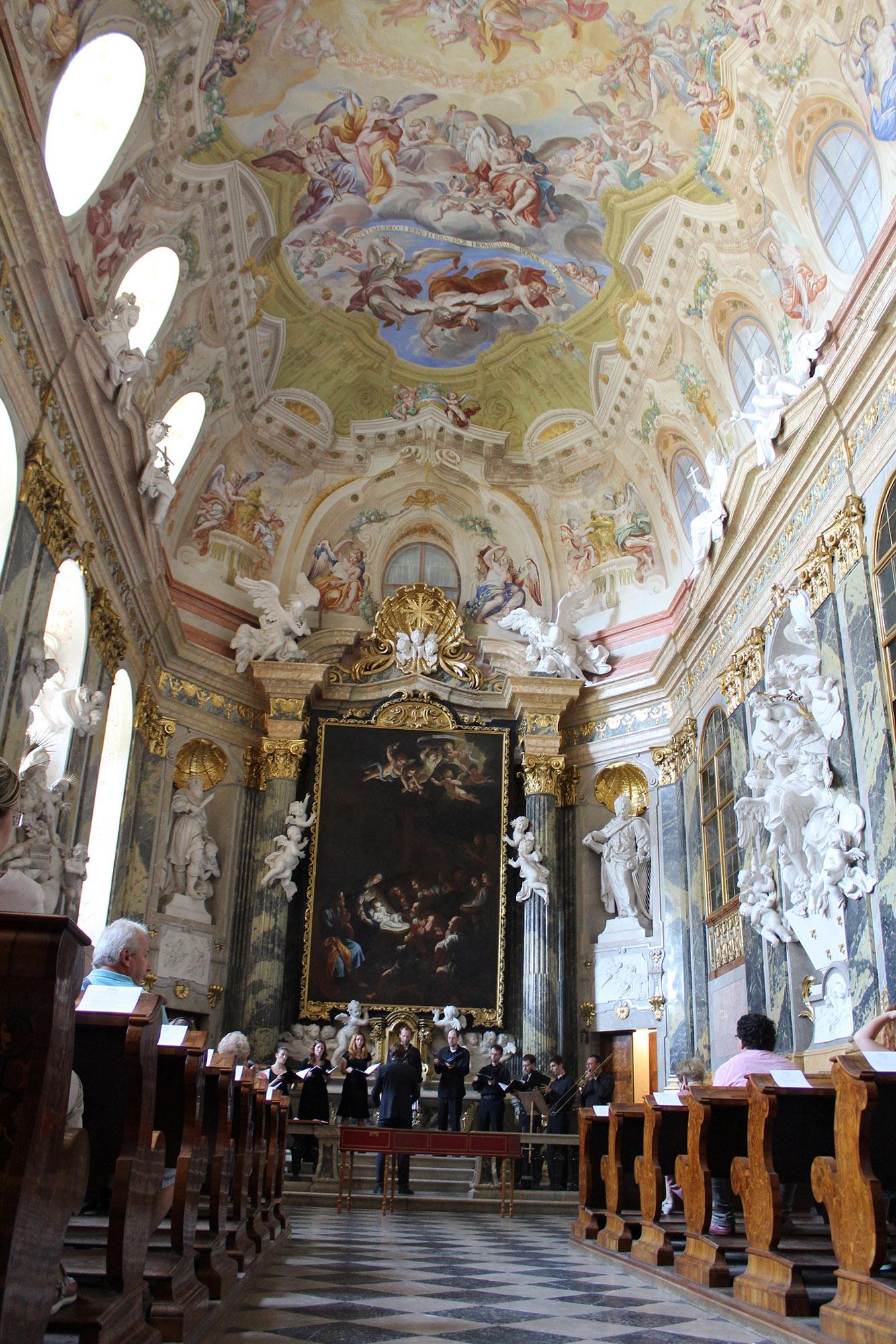
The Valtice castle gained its present baroque form through successive remodelings during the 17th century. The entire area is a commitment to aesthetic excellence laced with lakes and tree-lined alleys. It also contains forest expanses and vast agricultural areas—with a focus on vineyard-filled landscapes. Apart from the castles, the area is set off by a series of architecturally significant, smaller romantic structures known as follies, as well as pavilions. All structures have been ingeniously incorporated into the landscape over three centuries.
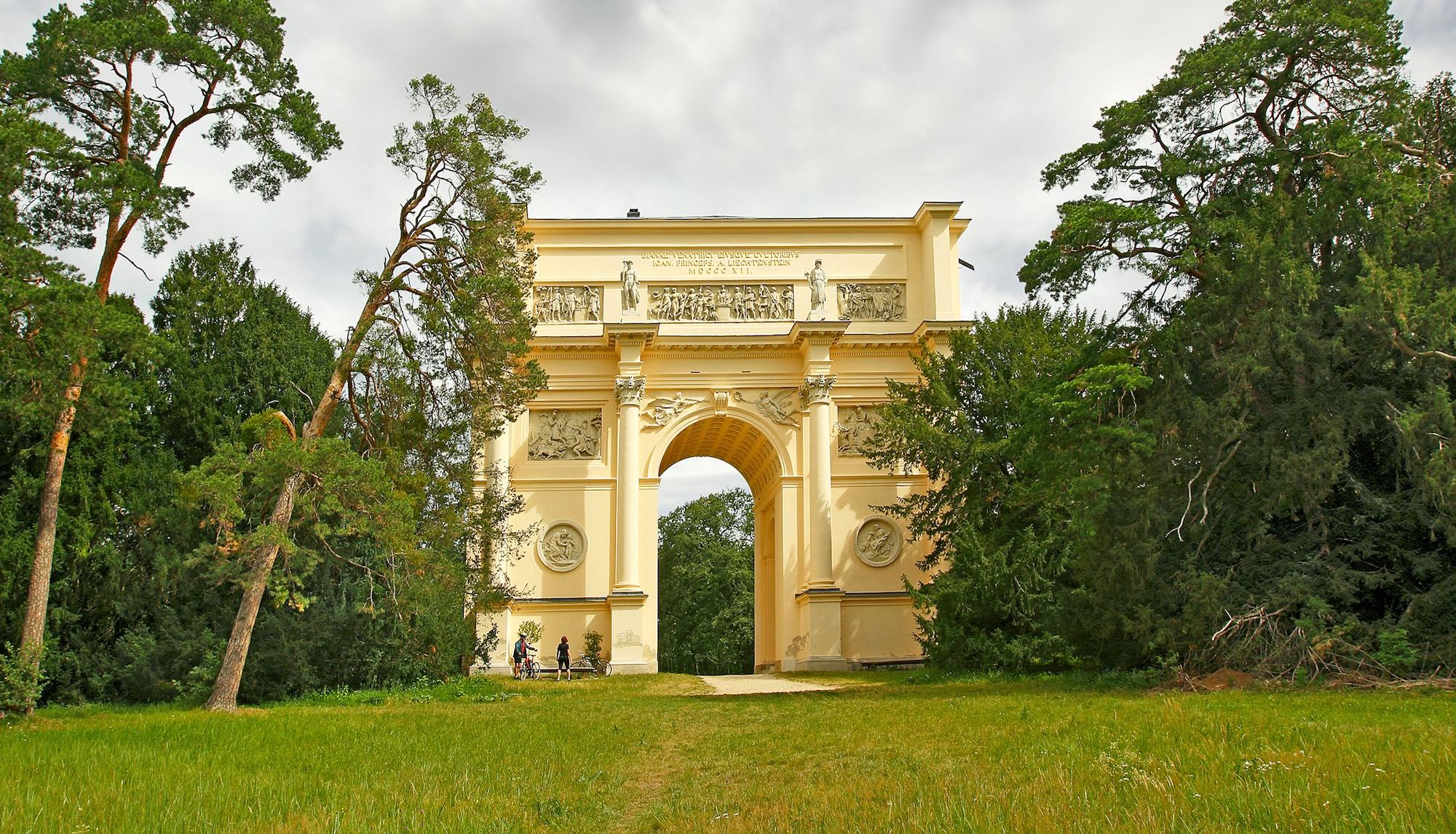
How to Get there
The Lednice-Valtice Area is located in the south of the Czech Republic, near the border with Slovakia and Austria.
It is 260 kilometres, or 2.5 hours by car from Prague, the capital city of Czech Republic. The second largest city in the Czech Republic, Brno, is less than an hour's drive away, or about 60 kilometres. Both Vienna (Austria) and Bratislava (Slovakia) are both about an hour by car.
Lednice-Valtice-Area is accessible from the Brno-Bratislava Highway, just a few minutes' drive from the highway exit.
When to Visit
There are acivities and reasons to visit most times of the year. In February and March, both castles are open during weekends. From April to June, the number of visitors increases, along with the tourism offers. Visits to the region reach their peak in July and August.
In September and October, attendance and many attractions are slowly declining, but vineyards become the stars. In November, the program shifts again to weekend-only. In December, many of the events are over, and in January all attractions are closed.
How to Visit
Thanks to its location, the Lednice-Valtice Area is easily accessible by plane from the Vienna Airport. There are convenient train connections from Vienna Airport to Břeclav-Valtice.
The district town of Břeclav offers a connection with trains or buses to Valtice or Lednice. While public transport is not available, taxis are available in front of the main train station in Břeclav. It is also possible to rent a car in Vienna, Prague, Bratislava, or Brno.
Please check online for the connection information to Valtice or Lednice.
Sights and Attractions recommended by the locals
Lednice-Valtice Cultural Landscape, Czechia
There are activities and reasons to visit most times of the year. In February and March, both castles are open during weekends. From April to June, the number of visitors increases, along with the tourism offers. Visits to the region reach their peak in July and August.
In September and October, attendance and many attractions are slowly declining, but vineyards become the stars. In November, the program shifts again to weekend-only. In December, many of the events are over, and in January all attractions are closed.
Lednice Castle Guided tours:
January: closed
February, March, April: Saturday, Sunday, 10:00 – 16:00
May, June: Tuesday - Sunday, 09:00 – 17:00
July, August: daily, 09:00 - 17:00
September: Tuesday - Sunday, 09:00 – 17:00
October: Saturday, Sunday, 09:00 - 16:00
November: Saturday, Sunday, 10:00 – 16:00
December: closed
Check the website for up to date information.
Valtice Castle Guided tours:
January, February, March: closed
April: Tuesday - Sunday, 09:00 – 16:00
May, June: Saturday, Sunday, 10:00 – 16:00
July, August: daily, 09:00 - 17:00
September: Tuesday - Sunday, 09:00 – 17:00
October: Tuesday - Sunday, 09:00 - 15:00
November: Saturday, Sunday, 10:00 – 14:00
December: closed
Check the website for up to date information.
The Lednice-Valtice Landscape is freely accessible, guided tours, exhibitions and other specialized activities are charged. Information on prices can be found at various attractions and tours.
